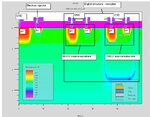Krishh
Newbie
why does latch up occur only in CMOS technology? Is there any possibilities of Latch up in other than CMOS technology..? i.e. in NMOS, PMOS alone.. or cobination of those..
Follow along with the video below to see how to install our site as a web app on your home screen.
Note: This feature may not be available in some browsers.


